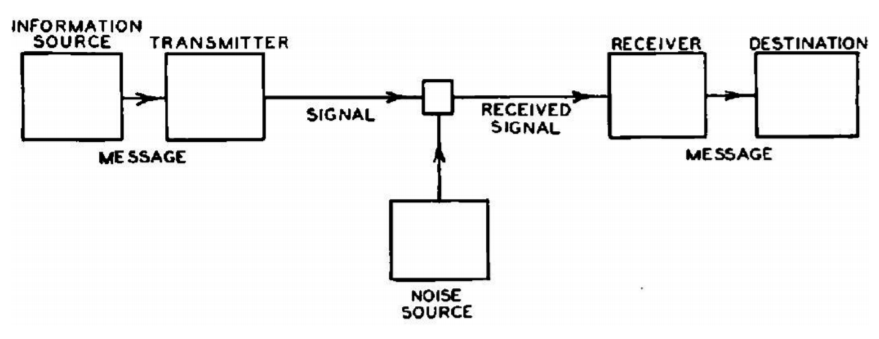Written by Josh A.
Introduction
Customer communication is one of the main antecedents of customer satisfaction in the modern environment (Hanninen and Karjaluoto, 2017). Being able to contact a company on a 24/7 basis is frequently recognised as a sign of consumer recognition and support. However, not all organisations can afford recruiting large teams of English-speaking assistants with in-depth product training. Artificial intelligence (AI) solutions and AI-powered chatbots provided an answer to this dilemma and allowed many organisations to implement 24/7 functionality into their marketing communication strategies (Pavliscak, 2018). The list of successful adopters includes such companies as Whole Foods, Pizza Hut, Domino’s, and H&M (Kim, 2018). However, these brands belong to the mass market segment and their consumers may not have the same level of e-services expectations as premium brands clients. This essay closes this gap by exploring the effect of chatbots on the customer satisfaction in luxury e-services.
Customer Communication in the Online Environment
Customer communication is frequently presented in the form of the communication cycle depicted in the following figure (Ellestrom, 2018). Marketing information is delivered via the selected channel (transmitter) to the destination (customer). However, the message may be influenced by external ‘noise’ distorting recipient perceptions. The original description of noise was largely based on technical limitations. However, it may also involve a number of factors that influence communication such as society opinions regarding the information source, personal thoughts of the consumer, or other factors influencing the perception of the message or the capability to decipher it accurately. In the case of the online environment, noise sources also include incompetent customer support staff, the lack of integrated marketing communication, or outdated product data on company resources (Hyken, 2018). These disruptions have a substantially greater impact on customer satisfaction than in the offline era as internet technologies allow prospective consumers to receive relevant data within minutes. Hence, the companies unable to provide accurate and up-to-date information quickly fall behind their competitors and are excluded from the evaluation of alternatives.
Figure 1: Communication Cycle Framework
Source: Ellestrom (2018, p.272)
This notion is especially significant within the scope of the consumer decision-making model (Wang and Yu, 2017). This framework includes five consequent stages, namely the need recognition, the search for information, the appraisal of alternatives, the purchase decision, and the post-purchase experience and evaluation. Within the scope of the earlier discussed noise problem, any difficulties in getting the relevant data from or establishing communication with a certain brand may exclude it from the list of considered options. Decision support solutions such as chatbots may assist the second and third phases by providing relevant information about the selected services (Khan, 2017). However, customer satisfaction may also depend on a number of auxiliary factors. First, the automated assistant must be capable of providing accurate information in a consistent manner. Second, the technology acceptance model implies that such solutions must be easy to use without prior training. Finally, chatbots and other automated decision-making instruments must identify consumer requests requiring the assistance of a live operator and should not serve as a barrier to such requests.
Luxury E-Services and Customer Communication
Chatbots are presently used by such popular luxury brands as Burberry, Louis Vuitton, and Tommy Hilfiger (Marr, 2017). The first brand limits their application to push notifications about new promotional events and exhibitions. On the contrary, Tommy Hilfiger is presently testing style advice capabilities where the company chatbot asks questions regarding consumer preferences and offers several looks options (Nealon, 2018). It also informs the consumer about items availability and demonstrates brief recap videos for shopping cart contents prior to checkout. Finally, the Louis Vuitton chatbot can be viewed as a ‘middle-of-the-road’ option between these two poles (Williams, 2017). The solution has limited answer options and a simplified design. However, it allows customers to get advice on choosing gifts to different recipients. This chatbot is also capable of finalising the purchase process by offering shipping or pick-up variants and coordinating delivery periods.
While the experience of the analysed three brands could be viewed as a positive one, the earlier considered theories suggest a number of problematic aspects that may adversely impact customer satisfaction in the luxury segment. First, premium consumers want to enjoy hedonic benefits of consumption rather than utilitarian ones (Musnaini et al., 2017). In terms of e-services, this may be recognised as the expectations of high-quality support. The company must provide highly accurate information regarding available options, their advantages for a specific customer, and the ways purchase decisions can be completed. Live experts usually have substantial experience and knowledge and may create the luxury experience for consumers in the offline environment (Seo and Buchanan-Oliver, 2017). At the same time, these specialists are susceptible to human errors and do not radically differ from chatbots in online communications via text messages. They may need sufficient time to browse through company databases and are not capable of remembering hundreds of available accessories, product lines, or seasonal offerings that are frequently introduced on a daily basis. In this aspect, a well-designed decision support chatbot may reduce the amount of noise and contribute to the clarity of marketing message transmission.
Second, the level of customer satisfaction within the scope of the consumer decision-making model largely depends on both the speed and the format of information provision (Wang and Yu, 2017). Modern big data processors can perform millions of operations per second, which makes them capable of offering an almost instant response to customer requests. At the same time, they may personalise marketing communication by analysing the language elements characteristic to specific clients or to luxury consumers in general (Khan, 2017). These elements can bring the personal touch to e-services provision. They also contribute to the sense of recognition and attentiveness that premium customers are accustomed to in the offline environment. However, it should be noted that the current state of chatbots development mechanisms does not allow to use them as a complete replacement for live support assistants. Therefore, a combination of these two methods may be necessary until luxury companies have collected a sufficient amount of big data to fully automate the provision of e-services.
Conclusion
It can be concluded that the effect of chatbots on customer satisfaction in the luxury e-services segment is moderated by a number of factors that influence communication. They include the response speed, the amount of ‘noise’ introduced by a certain marketing channel, and the overall capability to create the sense of recognition and personalised attention (Hanninen and Karjaluoto, 2017). Presently, these qualities cannot be provided by fully automated solutions. At the same time, they already offer such advantages as 24/7 availability, medium costs of implementation, instant response to basic customer requests, and the potential for almost unlimited personalisation of consumer experience in the future (Khan, 2017). These findings suggest that luxury brands should follow the example of Burberry, Louis Vuitton, and Tommy Hilfiger and start integrating chatbots in their e-service ecosystems. First, they can analyse anonymised customer data in order to identify the most popular consumer questions, the optimal choice of words and phrases in company responses, and the expectations regarding the service quality. Second, luxury brands can use chatbots for non-critical areas of e-services such as sending push notifications or providing answers to standard requests during non-working hours.
References
Ellestrom, L. (2018) “A medium-centered model of communication”, Semiotica, 224 (1), pp. 269-293.
Hanninen, N. and Karjaluoto, H. (2017) “The effect of marketing communication on business relationship loyalty”, Marketing Intelligence & Planning, 35 (4), pp. 458-472.
Hyken, S. (2018) “What Customers Want and Expect”, [online] https://www.forbes.com/sites/shephyken/2018/08/05/what-customers-want-and-expect/#3ff259657701 [Accessed on 18 December 2018].
Khan, R. (2017) “Standardized Architecture for Conversational Agents a.k.a. ChatBots”, International Journal of Computer Trends and Technology (IJCTT), 50 (2), pp. 114-121.
Kim, L. (2018) “10 Examples of How Brands Are Using Chatbots to Delight Customers”, [online] Available at: https://www.inc.com/larry-kim/10-examples-of-how-brands-are-using-chatbots-to-de.html [Accessed on 18 December 2018].
Marr, B. (2017) “The Amazing Ways Burberry Is Using Artificial Intelligence And Big Data To Drive Success”, [online] Available at: https://www.forbes.com/sites/bernardmarr/2017/09/25/the-amazing-ways-burberry-is-using-artificial-intelligence-and-big-data-to-drive-success/#76267c6b4f63 [Accessed on 18 December 2018].
Musnaini, M., Astuti, S., Sukoco, B. and Yacob, S. (2017) “Effect of hedonic value and consumer knowledge on buying intention for luxury brand counterfeit products”, International Journal of Business and Globalisation, 19 (4), pp. 497-511.
Nealon, G. (2018) “Using Facebook Messenger And Chatbots To Grow Your Audience”, [online] Available at: https://www.forbes.com/sites/forbesagencycouncil/2018/06/04/using-facebook-messenger-and-chatbots-to-grow-your-audience/#19278565733b [Accessed on 18 December 2018].
Pavliscak, P. (2018) Emotionally Intelligent Design: Rethinking How We Create Products, Boston: O’Reilly.
Seo, Y. and Buchanan-Oliver, M. (2017) “Constructing a typology of luxury brand consumption practices”, Journal of Business Research, 1 (1), pp. 1-9.
Wang, Y. and Yu, C. (2017) “Social interaction-based consumer decision-making model in social commerce: The role of word of mouth and observational learning”, International Journal of Information Management, 37 (3), pp. 179-189.
Williams, R. (2017) “Louis Vuitton Turns to Facebook Bot to Chat Up Customers Online”, [online] https://www.bloomberg.com/news/articles/2017-12-06/louis-vuitton-turns-to-facebook-bot-to-chat-up-customers-online [Accessed on 18 December 2018].


